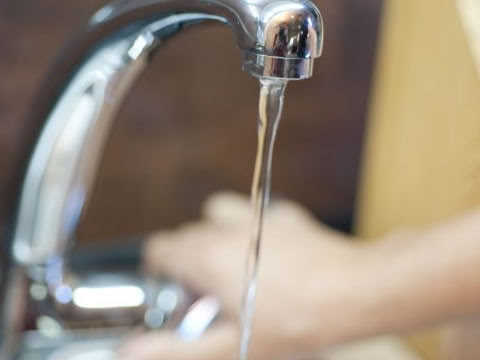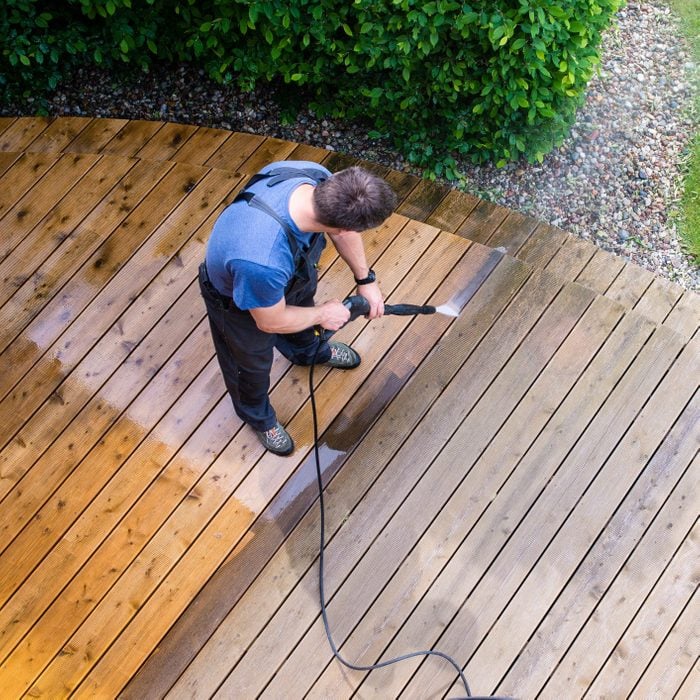Confirmed Techniques for Solving Low Water Pressure in Your Home
Click HereThey are making a number of good observations relating to Dealing with Low Water Pressure in Your Home overall in this content in the next paragraphs.

Low water pressure in your house can be an aggravating issue, impacting every little thing from showering to cleaning meals. If you're experiencing weak water circulation, there are a number of possible reasons and options to explore. In this guide, we'll discuss usual reasons for low water stress and functional actions to resolve the problem properly.
Introduction to Low Water Pressure
Low water pressure takes place when the flow of water from your taps, showers, and various other fixtures is weaker than typical. This can make daily jobs a lot more challenging and much less reliable. Recognizing the sources of low tide pressure is crucial to discovering the best option.
Usual Sources Of Low Water Stress
Pipeline Obstructions
With time, pipelines can become clogged with mineral deposits, sediment, or debris, restricting the circulation of water. This is an usual concern in older homes with galvanized steel pipes.
Deterioration
Deterioration within pipelines can lead to leaks and lowered water stress. Rust buildup can restrict water flow, specifically in aging plumbing systems.
Faulty Pressure Regulatory Authorities
Pressure regulators are in charge of keeping consistent water pressure in your home. If they malfunction, it can lead to low water stress or uneven circulation throughout your home.
Metropolitan Water Supply Issues
Occasionally, the trouble lies outside your home. Community water problems, such as main line leakages or maintenance work, can momentarily minimize water stress in your area.
How to Diagnose Low Water Pressure
Inspecting Taps and Fixtures
Beginning by evaluating the water stress at various faucets and fixtures throughout your home. If the concern is separated to certain areas, it might show localized issues.
Evaluating Pipes
Examine visible pipes for indications of leakages, deterioration, or blockages. Focus on any uncommon noises, such as knocking or rattling pipes, which could indicate problems within the plumbing system.
Consulting with a Plumber
If you're not able to determine the root cause of low tide stress, take into consideration working with a specialist plumber to conduct a thorough examination. They can determine underlying issues and advise appropriate services.
DIY Solutions to Repair Low Water Stress
Cleaning Up Aerators and Showerheads
Mineral deposits can collect in aerators and showerheads, minimizing water circulation. Remove and clean up these parts consistently to boost water pressure.
Flushing Water Heater
Debris buildup in the hot water heater can restrict circulation and reduce efficiency. Flushing the container periodically assists get rid of debris and keep optimal performance.
Examining Pressure Regulatory Authority
Make certain that the pressure regulator is functioning correctly. Adjusting or replacing the regulatory authority can aid bring back appropriate water pressure throughout your home.
Cleaning Clogs in Water Lines
For minor blockages, attempt utilizing a plumbing serpent or chemical drain cleaner to clear blockages in pipelines. Be cautious when making use of chemicals and comply with security standards.
When to Call a Professional Plumber
If DIY initiatives fall short to resolve the concern or if you suspect considerable plumbing problems, it's ideal to look for help from an accredited plumber. They have the knowledge and tools to resolve intricate issues safely and efficiently.
Preventive Measures to Preserve Water Stress
Regular Upkeep
Arrange routine upkeep for your plumbing system to avoid issues such as rust, leaks, and obstructions. Dealing with small issues early can help prevent more considerable repair services in the future.
Mounting a Pressure Booster
Consider installing a pressure booster pump to improve water stress in areas with regularly reduced flow. This can be particularly valuable for multi-story homes or properties with high-demand components.
Tracking Water Use
Be mindful of water use behaviors and stay clear of ill-using the plumbing system. Easy modifications, such as shocking showers and washing tons, can assist keep adequate water stress.
Final thought
Handling low tide pressure can be aggravating, yet identifying the underlying reasons and carrying out ideal remedies can recover ideal flow throughout your home. Whether it's cleansing aerators, inspecting pipelines, or consulting with a plumber, taking proactive actions can ensure a consistent supply of water for your day-to-day demands.
HOW TO FIX LOW WATER PRESSURE IN YOUR HOUSE (EXPERT GUIDE)
The morning shower lacking any real pressure? Bathtub taking hours to fill? Or maybe you’re dissatisfied with the inadequate performance from your combi boiler?
Then you, like millions of others across the UK, might be experiencing low water pressure.
Fortunately, the good news is that you don’t have to continue living this way. The cause of low water pressure in the home is often quite simple, and you may not even require a plumber to fix the problem.
What causes low water pressure in the house?
If you are experiencing issues with water pressure throughout your home, then you may have one of the problems outlined below.
Most of these problems can be fixed quite easily, but for others, you may need to contact a plumber.
Obstructed Shutoff Valve
If you’ve just bought a new home or recently had building work conducted on your property, there is a chance that your water valves were not fully opened.
If the water valve is partially closed, then you may be restricting the amount of water entering your home. To fix this, simply ensure the valve is fully open.
If the valve appears fully open but you are still encountering reduced water pressure, then the valve may be broken. If this is the case, do not under any circumstances try to fix it without proper training.
Often found under your kitchen sink, a water valve will usually look like a bright yellow handle.
Again, if you believe the water valve is broken, contact a plumber immediately.
Leaks in Your Water Pipes
Leaks are the worst-case scenario when it comes to low water pressure.
If the water pipes are damaged, then this will cause low water pressure, as not all the water will make it to your taps.
After you’ve checked to see if the valve is fully open, you can conduct a leak check of your home. Now, this may seem scary, but it is actually quite simple.
Clogged Water Pipes
Clogged water pipes are one of the most common causes of low water pressure.
These clogs usually build-up when your home is supplied water via iron pipes. Iron is particularly vulnerable to rusting which can then break off and cause an obstruction within your system. You also face the problem of things like dirt, gravel or sand entering creating mineral deposits which further block water flowing from the mains water supply.
Unfortunately, if you suspect that clogged pipes may be restricting your water supply, then you will need to contact a plumber.
In this situation, you will either need to have your pipes removed and cleaned or in more severe cases, you could require a new set of water pipes.
Designer Taps
Designer taps look fantastic, but are they built to be efficient in your plumbing system? Modern taps are built for modern homes and they often have lower flow rates that are specifically designed for use within high-pressure systems.
Install a Water Pressure Booster Pump
If the issue is simply that the mains water pressure supply is too low, the simplest fix is to invest in a booster pump. Found in homes of all shapes and sizes, booster pumps are a relatively cheap option to add extra pressure to your home.
Designed to increase water pressure by passing water into the pump from your mains supply and then ejecting it into your home water system at a higher pressure, a booster pump is a truly simple and effective solution to increasing water pressure.
https://www.anchorpumps.com/blog/the-plumbers-guide-to-fixing-low-water-pressure/

HOW TO FIX LOW WATER PRESSURE IN YOUR HOUSE (EXPERT GUIDE)
The morning shower lacking any real pressure? Bathtub taking hours to fill? Or maybe you’re dissatisfied with the inadequate performance from your combi boiler?
Then you, like millions of others across the UK, might be experiencing low water pressure.
Fortunately, the good news is that you don’t have to continue living this way. The cause of low water pressure in the home is often quite simple, and you may not even require a plumber to fix the problem.
What causes low water pressure in the house?
If you are experiencing issues with water pressure throughout your home, then you may have one of the problems outlined below.
Most of these problems can be fixed quite easily, but for others, you may need to contact a plumber.
Obstructed Shutoff Valve
If you’ve just bought a new home or recently had building work conducted on your property, there is a chance that your water valves were not fully opened.
If the water valve is partially closed, then you may be restricting the amount of water entering your home. To fix this, simply ensure the valve is fully open.
If the valve appears fully open but you are still encountering reduced water pressure, then the valve may be broken. If this is the case, do not under any circumstances try to fix it without proper training.
Often found under your kitchen sink, a water valve will usually look like a bright yellow handle.
Again, if you believe the water valve is broken, contact a plumber immediately.
Leaks in Your Water Pipes
Leaks are the worst-case scenario when it comes to low water pressure.
If the water pipes are damaged, then this will cause low water pressure, as not all the water will make it to your taps.
After you’ve checked to see if the valve is fully open, you can conduct a leak check of your home. Now, this may seem scary, but it is actually quite simple.
Clogged Water Pipes
Clogged water pipes are one of the most common causes of low water pressure.
These clogs usually build-up when your home is supplied water via iron pipes. Iron is particularly vulnerable to rusting which can then break off and cause an obstruction within your system. You also face the problem of things like dirt, gravel or sand entering creating mineral deposits which further block water flowing from the mains water supply.
Unfortunately, if you suspect that clogged pipes may be restricting your water supply, then you will need to contact a plumber.
In this situation, you will either need to have your pipes removed and cleaned or in more severe cases, you could require a new set of water pipes.
Designer Taps
Designer taps look fantastic, but are they built to be efficient in your plumbing system? Modern taps are built for modern homes and they often have lower flow rates that are specifically designed for use within high-pressure systems.
Install a Water Pressure Booster Pump
If the issue is simply that the mains water pressure supply is too low, the simplest fix is to invest in a booster pump. Found in homes of all shapes and sizes, booster pumps are a relatively cheap option to add extra pressure to your home.
Designed to increase water pressure by passing water into the pump from your mains supply and then ejecting it into your home water system at a higher pressure, a booster pump is a truly simple and effective solution to increasing water pressure.
https://www.anchorpumps.com/blog/the-plumbers-guide-to-fixing-low-water-pressure/
I am very drawn to and I'm hoping you enjoyed reading our blog post. Are you aware of someone else who is serious about Low Water Pressure in the House?? Feel free to promote it. Thanks a lot for your time spent reading it.
Click For More Information